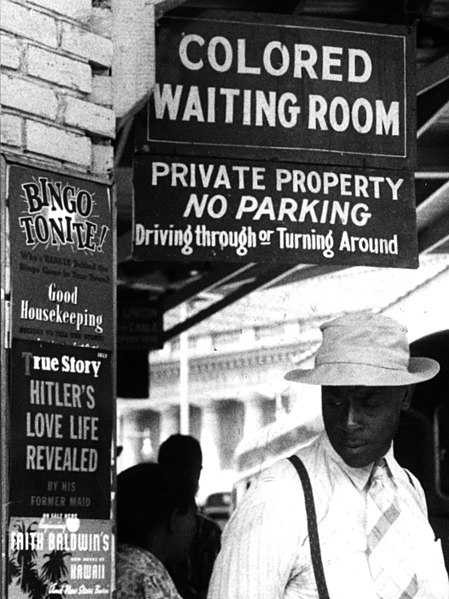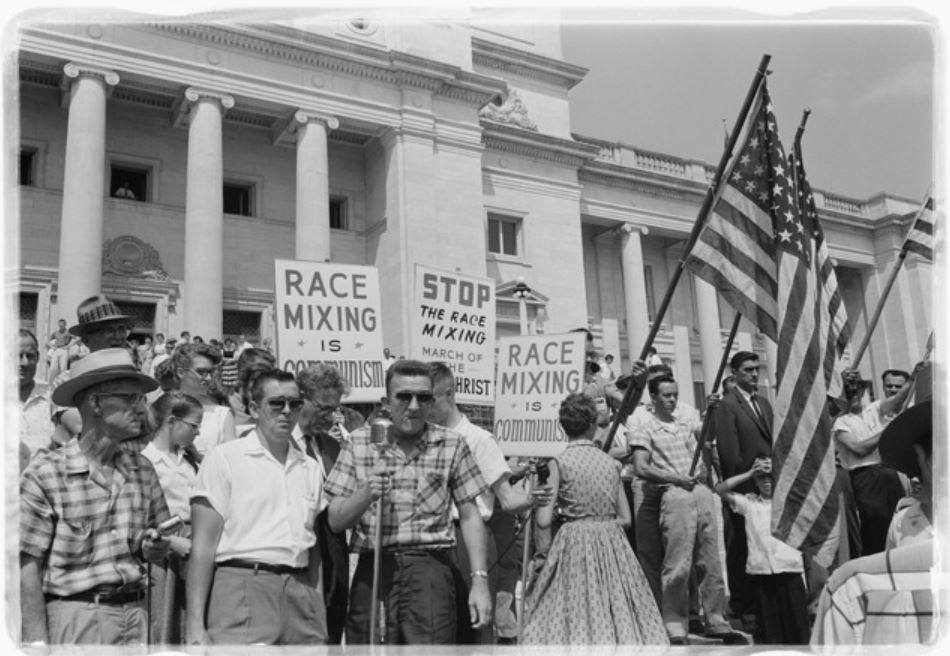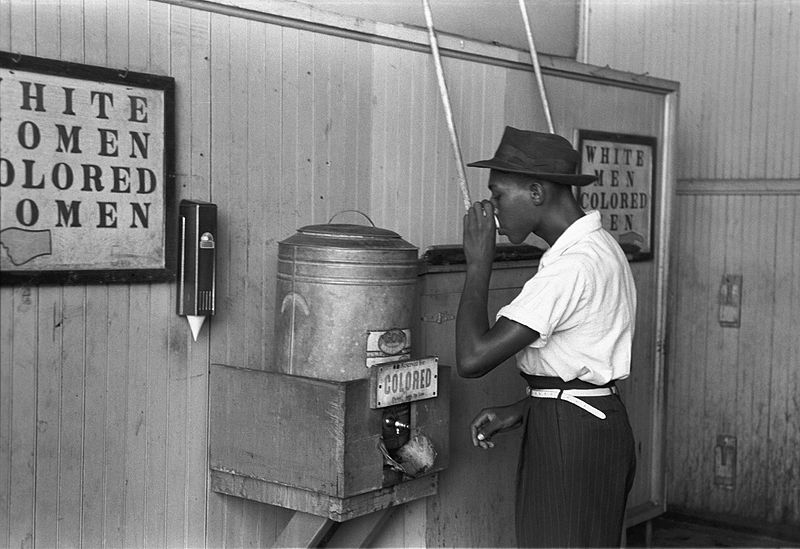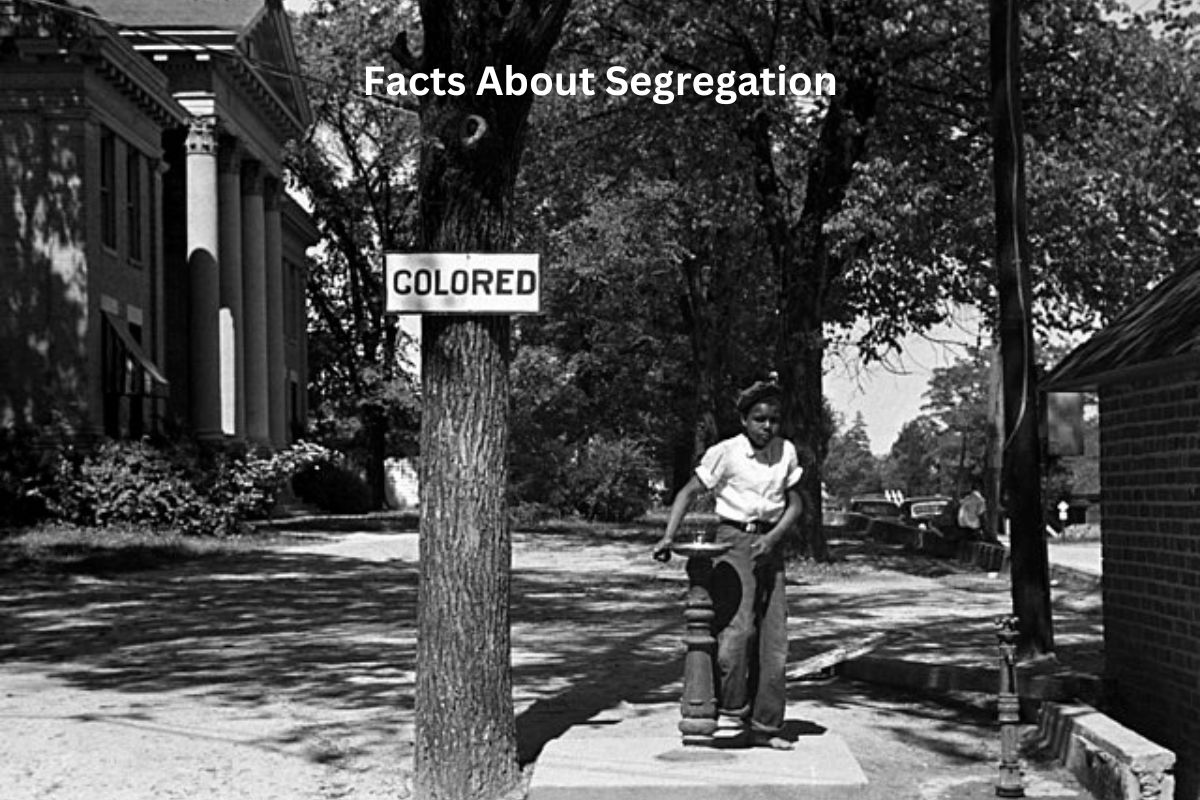Segregation in the United States is a deeply ingrained aspect of the nation’s history, marked by a long and painful legacy of racial discrimination and division.
This system of separating people based on race, particularly between African Americans and whites, was enforced through laws, policies, and social norms for many decades.
This introduction sets the stage for a more comprehensive exploration of the key facts and events related to segregation in the United States, shedding light on its enduring impact and the ongoing struggle for racial equality.
Segregation Facts
1. Jim Crow Laws
Jim Crow laws were a series of state and local laws that enforced racial segregation and discrimination against African Americans in the Southern United States. These laws were enacted primarily in the late 19th and early 20th centuries.
Also Read: Segregation Timeline
The term “Jim Crow” originates from a character in minstrel shows who perpetuated racial stereotypes. It came to symbolize the racist practices of segregation and discrimination.

2. Plessy v. Ferguson (1896)
Plessy v. Ferguson was a landmark Supreme Court case in 1896 that had a profound impact on the legal framework of segregation. The case revolved around a Louisiana law that required separate train cars for Black and white passengers.
The Supreme Court’s decision in Plessy upheld the principle of “separate but equal,” which meant that as long as segregated facilities were deemed equal in quality, they were constitutionally permissible. This decision effectively legitimized racial segregation and discrimination in public facilities.
3. Brown v. Board of Education (1954)
Brown v. Board of Education was a historic Supreme Court case in 1954 that challenged the legality of racial segregation in public schools. The case was brought on behalf of Linda Brown, an African American student in Topeka, Kansas.
In a unanimous decision, the Supreme Court ruled that the segregation of public schools was unconstitutional because it violated the Equal Protection Clause of the 14th Amendment. The famous phrase from this case was “separate educational facilities are inherently unequal.”
The Brown v. Board decision marked a turning point in the civil rights movement and paved the way for desegregation efforts across various aspects of American society.
4. Civil Rights Act of 1964
The Civil Rights Act of 1964 was a landmark piece of legislation passed by the U.S. Congress and signed into law by President Lyndon B. Johnson on July 2, 1964.
The Act aimed to end racial segregation and discrimination in public places, including hotels, restaurants, theaters, and other public accommodations. It also prohibited employment discrimination on the basis of race, color, religion, sex, or national origin.
Title IV of the Civil Rights Act authorized the federal government to withhold funding from schools that remained segregated. This provision was a crucial step in advancing the desegregation of public schools.

5. Segregation in Education
Before the civil rights movement gained momentum, many Black students attended racially segregated schools that were often underfunded and provided inferior educational opportunities compared to their white counterparts.
Segregation in education was challenged through a series of legal battles and activism. Notable cases include Brown v. Board of Education, which declared segregated schools unconstitutional, and various court-ordered desegregation efforts in the following years.
6. Bus Boycotts
The Montgomery Bus Boycott, which began in December 1955 and lasted for over a year, was a significant civil rights protest against racial segregation on public buses in Montgomery, Alabama.
Rosa Parks, a Black woman, became a symbol of the boycott when she refused to give up her bus seat to a white passenger. Her arrest for this act of civil disobedience sparked the boycott.
Dr. Martin Luther King Jr. emerged as a prominent leader during the boycott, advocating for nonviolent resistance. The boycott resulted in the desegregation of Montgomery’s bus system and inspired similar actions in other cities.
7. Segregated Water Fountains and Facilities
Racial segregation extended to many public facilities, including water fountains, restrooms, waiting rooms, and more. These facilities were often labeled as “Whites Only” and “Colored” or “Negro,” enforcing separation based on race.
Segregation in these facilities was not just about physical separation; it was a manifestation of deeply ingrained racial discrimination and inequality.

8. Housing Discrimination
Housing discrimination played a significant role in maintaining racial segregation in American cities. One discriminatory practice known as “redlining” was used by banks and government agencies to deny loans and mortgages to people in predominantly Black neighborhoods.
Redlining effectively prevented Black families from purchasing homes in certain areas, contributing to residential segregation. It also resulted in disinvestment and limited access to essential services in Black communities.
9. Segregation in Sports
Segregation was not limited to public facilities and institutions; it also affected professional sports. African American athletes faced significant barriers in pursuing careers in mainstream sports leagues.
In response, separate leagues and teams, such as the Negro Leagues in baseball and the Negro National Football League (NNFL), were established to provide opportunities for Black athletes to compete at a high level.
Prominent athletes like Jackie Robinson and Willie Mays later broke the color barrier by joining previously all-white professional sports leagues, marking important milestones in desegregation.
10. Continued Challenges
While significant progress has been made in dismantling legal segregation and discrimination, the United States still faces challenges related to racial inequality and disparities.
De facto segregation, which occurs due to socioeconomic factors and historical patterns, continues to exist in housing, education, and other areas.
Disparities in the criminal justice system, wealth, healthcare, and educational achievement persist, leading to ongoing discussions and efforts to address systemic racism and promote racial equality.
